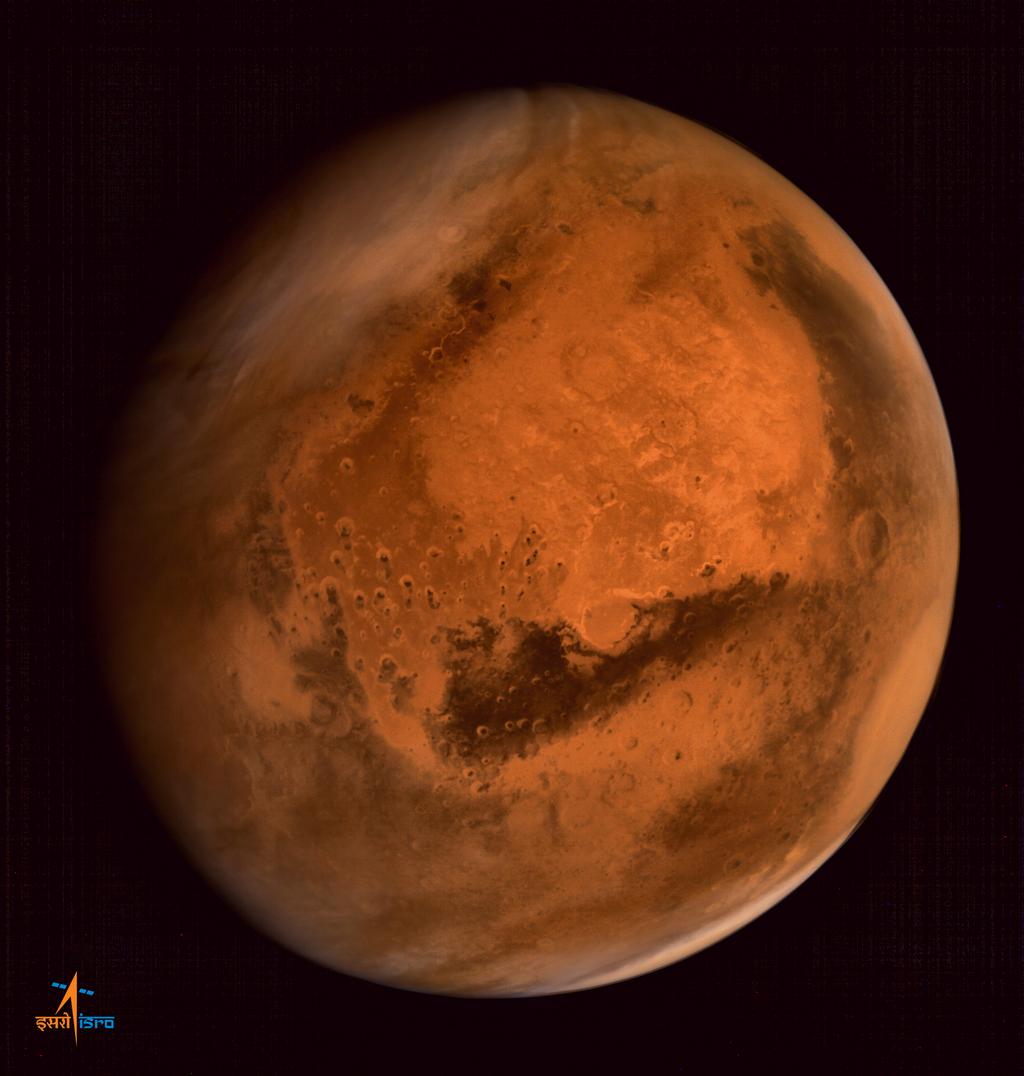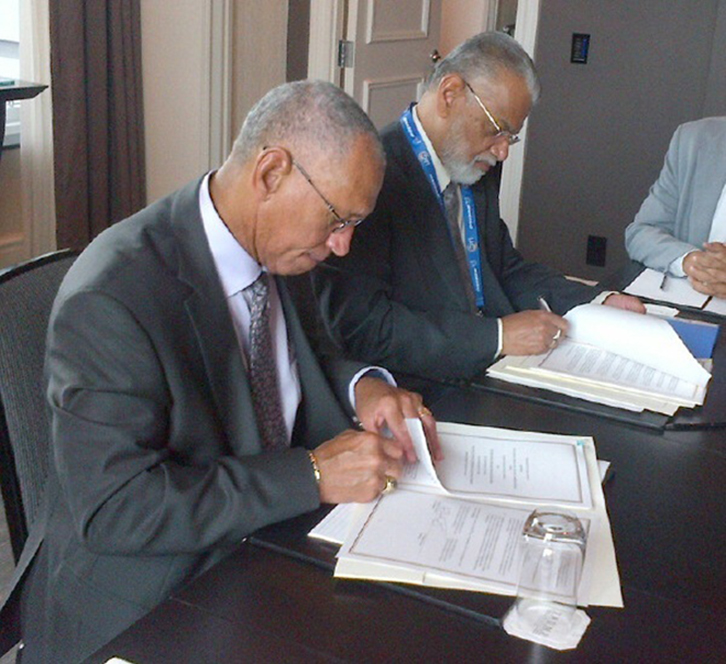
India's recent Mars success appears to have turned some heads.
NASA and the Indian Space Research Organisation (ISRO) will investigate ways to collaborate on future missions to Mars, officials said Tuesday (Sept. 30). The announcement comes just one week after India put its first-ever Mars probe in orbit around the Red Planet, becoming just the fourth entity — after the United States, the Soviet Union and the European Space Agency — to do so.
NASA and ISRO also signed an agreement Tuesday that lays out their respective roles on the NASA-ISRO Synthetic Aperture Radar (NISAR) mission, which is scheduled to launch to Earth orbit in 2020 to study the consequences of climate change on a fine scale. [India's First Mars Mission in Pictures (Gallery)]
"The signing of these two documents reflects the strong commitment NASA and ISRO have to advancing science and improving life on Earth," NASA Administrator Charles Bolden said in a statement. "This partnership will yield tangible benefits to both our countries and the world."
Bolden and ISRO chairman K. Radhakrishnan signed the two agreements Tuesday at the International Astronautical Congress meeting in Toronto.

The Mars document sets up a NASA-ISRO Mars working group, which will meet once a year to identify and plan out joint activities, which could at some point include a cooperative mission to the Red Planet, NASA officials said.
Also up for discussion, they added, will be possible ways to coordinate the science activities of India's Mars Orbiter Mission (MOM) probe and NASA's MAVEN spacecraft (short for Mars Atmosphere and Volatile Evolution), which arrived at the Red Planet on Sept. 21, just two days before MOM did.
Get the Space.com Newsletter
Breaking space news, the latest updates on rocket launches, skywatching events and more!
The NISAR mission will employ two different radar frequencies, known as L-band and S-band, to measure and study small surface changes around the globe, officials said. The new agreement specifies that NASA will provide NISAR's L-band system, a data-communication subsystem and some other gear; ISRO will be responsible for the body of the spacecraft, the S-band system, the rocket and launch services, NASA officials said.
NASA and ISRO have a history of working together. Under an agreement signed in 2008, for example, NASA provided two science payloads for India's Chandrayaan-1 moon mission, which spotted signs of water ice near the lunar north pole after launching in 2008.
"NASA and Indian scientists have a long history of collaboration in space science," said John Grunsfeld, NASA associate administrator for science. "These new agreements between NASA and ISRO in Earth science and Mars exploration will significantly strengthen our ties and the science that we will be able to produce as a result."
Follow Mike Wall on Twitter @michaeldwall and Google+. Follow us @Spacedotcom, Facebook or Google+. Originally published on Space.com.

Join our Space Forums to keep talking space on the latest missions, night sky and more! And if you have a news tip, correction or comment, let us know at: community@space.com.

Michael Wall is a Senior Space Writer with Space.com and joined the team in 2010. He primarily covers exoplanets, spaceflight and military space, but has been known to dabble in the space art beat. His book about the search for alien life, "Out There," was published on Nov. 13, 2018. Before becoming a science writer, Michael worked as a herpetologist and wildlife biologist. He has a Ph.D. in evolutionary biology from the University of Sydney, Australia, a bachelor's degree from the University of Arizona, and a graduate certificate in science writing from the University of California, Santa Cruz. To find out what his latest project is, you can follow Michael on Twitter.









